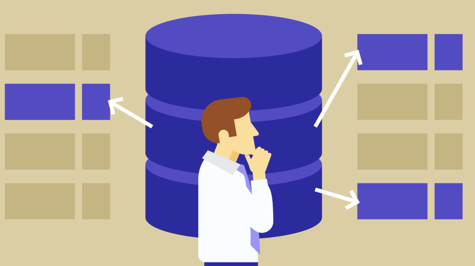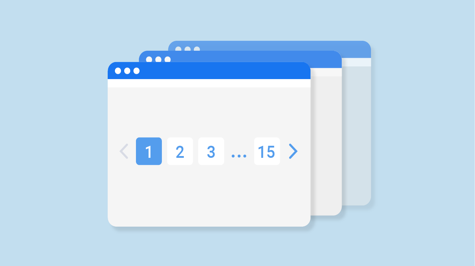Django is a popular web development framework that provides a lot of built-in functionality and tools to help developers build web applications quickly and efficiently. However, there are times when you need to write custom functions that are specific to your project. These functions, often called "shortcut functions," can simplify your code and make it easier to read and maintain.
In this guide, we'll cover how to create custom shortcut functions in Django and provide some examples to help you get started.
What are Shortcut Functions?
Shortcut functions are custom functions that you create in Django to perform a specific task. They are called "shortcut" functions because they allow you to perform a task with a shorter and more concise code than what would otherwise be required. Shortcut functions can be used throughout your Django project, and can help make your code more readable and maintainable.
For example, let's say that you have a model in your Django project called Person, and you want to retrieve all instances of that model that have a certain attribute value. You could write the following code:
people = Person.objects.filter(attribute=value)
However, if you need to perform this task frequently throughout your project, it can become cumbersome to write this code every time. Instead, you could create a shortcut function that encapsulates this logic:
def get_people_with_attribute_value(attribute, value):
return Person.objects.filter(attribute=value)
Now, whenever you need to retrieve people with a certain attribute value, you can simply call this function:
people = get_people_with_attribute_value(attribute, value)
Shortcut functions can be used to encapsulate any logic that you find yourself repeating frequently throughout your Django project.
How to Create Shortcut Functions
Creating shortcut functions in Django is simple. Here are the basic steps:
- Decide what task you want the shortcut function to perform.
- Create a function in a relevant module or app of your Django project.
- Write the code to perform the task.
- Test the function to make sure it works as expected.
- Use the function throughout your Django project.
Let's take a closer look at each of these steps.
1. Decide what task you want the shortcut function to perform.
The first step in creating a shortcut function is to decide what task you want the function to perform. This task should be something that you find yourself doing frequently throughout your Django project.
For example, you might find that you frequently need to retrieve instances of a certain model with a certain attribute value, or that you frequently need to generate a URL for a certain view.
Once you've identified the task, you can move on to the next step.
2. Create a function in a relevant module or app of your Django project.
The next step is to create a function in a relevant module or app of your Django project. This function should be named something that is descriptive of the task it performs.
For example, if you're creating a function to retrieve instances of a certain model with a certain attribute value, you might name the function get_model_instances_with_attribute_value.
The module or app in which you create the function should be relevant to the task it performs. For example, if you're creating a function to generate a URL for a certain view, you might create the function in the urls.py file of the app that contains that view.
3. Write the code to perform the task.
The next step is to write the code that performs the task you identified in step 1. This code should be written in the function you created in step 2.
For example, if you're creating a function to retrieve instances of a certain model with a certain attribute value, you might write code like this:
from myapp.models import MyModel
def get_model_instances_with_attribute_value(attribute, value):
return MyModel.objects.filter(**{attribute: value})
In this example, we're importing the MyModel model from the myapp app. We then define a function called get_model_instances_with_attribute_value, which takes two arguments: attribute and value. We use the filter method of the MyModel model to retrieve instances of that model where the attribute specified by the attribute argument has the value specified by the value argument.
Note that we're using the ** syntax to unpack a dictionary of keyword arguments. This allows us to pass the attribute argument as the name of the attribute to filter on.
4. Test the function to make sure it works as expected.
Before using your new shortcut function throughout your Django project, it's a good idea to test it to make sure it works as expected.
To test the function, you can create a simple Django view that calls the function and displays the results. For example, you might create a view like this:
from django.http import HttpResponse
from .shortcuts import get_model_instances_with_attribute_value
def test_shortcut_function(request):
instances = get_model_instances_with_attribute_value('name', 'John')
response = ', '.join([instance.name for instance in instances])
return HttpResponse(response)
In this example, we're importing our new shortcut function from a file called shortcuts.py in the same directory as our view. We then define a view called test_shortcut_function, which calls our shortcut function with the attribute argument set to 'name' and the value argument set to 'John'. We then create an HTTP response that displays the names of the instances that match this filter.
You can then test this view by navigating to its URL in your web browser.
5. Use the function throughout your Django project.
Once you've tested your shortcut function and confirmed that it works as expected, you can use it throughout your Django project to simplify your code and make it more readable.
For example, if you need to retrieve instances of MyModel with a certain name, you can now use your shortcut function like this:
from .shortcuts import get_model_instances_with_attribute_value
instances = get_model_instances_with_attribute_value('name', 'John')
This code is much more concise and readable than the equivalent code using the filter method directly.
Example Shortcut Functions
To give you some more ideas of the types of shortcut functions you can create in Django, here are a few more examples:
Example 1: Get the URL for a view
from django.urls import reverse
def get_view_url(view_name, **kwargs):
return reverse(view_name, kwargs=kwargs)
This shortcut function takes a view name and a set of keyword arguments and returns the URL for that view with those arguments. You can use this function to generate URLs for your views without having to remember the specific syntax for the reverse function.
Example 2: Get the current user's profile
from myapp.models import UserProfile
def get_user_profile(user):
try:
return user.profile
except UserProfile.DoesNotExist:
return None
This shortcut function takes a User object and returns that user's profile object, or None if the user doesn't have a profile. This function can simplify code that needs to access the current user's profile throughout your Django project.
Example 3: Get the latest objects from a model
from myapp.models import MyModel
def get_latest_objects(model, count=5):
return model.objects.order_by('-created_at')[:count]
This shortcut function takes a model class and an optional count argument (defaulting to 5) and returns a list of the count latest objects of that model, based on the created_at field. This function can simplify code that needs to retrieve the latest objects of a certain model throughout your Django project.
Example 4: Get objects from related models
from myapp.models import MyModel
def get_related_objects(instance):
return instance.related_set.all()
This shortcut function takes an instance of a model and returns a list of related objects, as defined by a ForeignKey or ManyToManyField. In this example, we're assuming that the related objects are defined by a reverse relation called related_set. You can use this function to simplify code that needs to access related objects throughout your Django project.
Example 5: Get the number of objects in a model
from myapp.models import MyModel
def get_model_count(model):
return model.objects.count()
This shortcut function takes a model class and returns the number of objects in that model. This function can simplify code that needs to count the number of objects in a certain model throughout your Django project.
Conclusion
Custom shortcut functions can be a powerful tool for simplifying your Django code and making it more readable. By following the steps outlined in this guide, you can create your own shortcut functions that perform common tasks in your Django project. With a little bit of creativity, you can create shortcut functions that save you time and effort throughout your development process.















